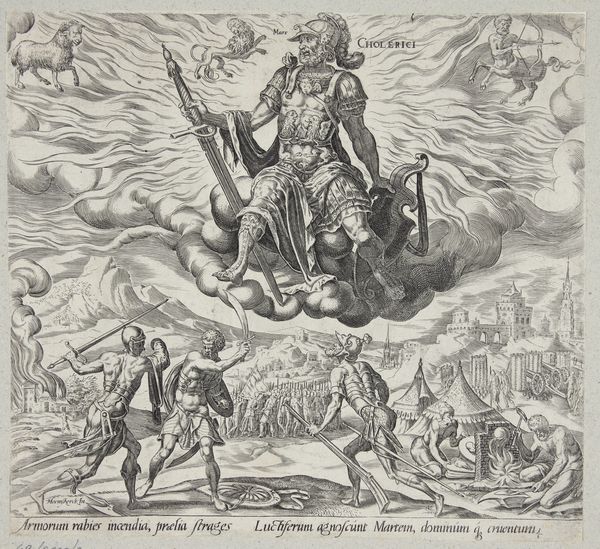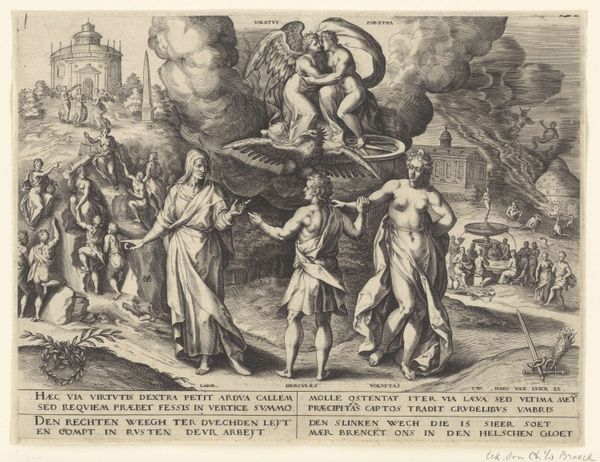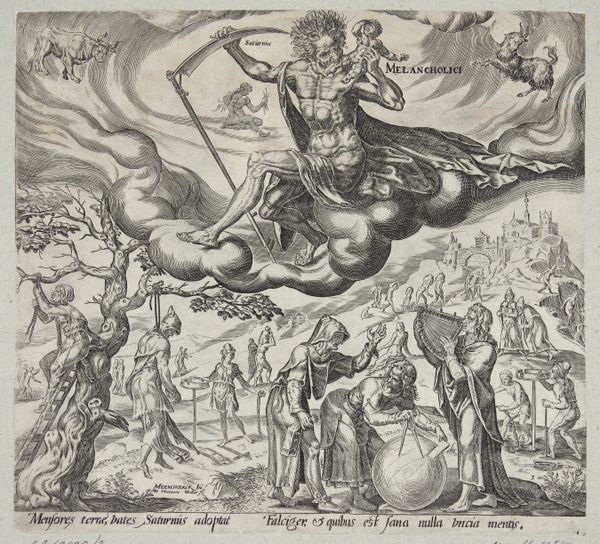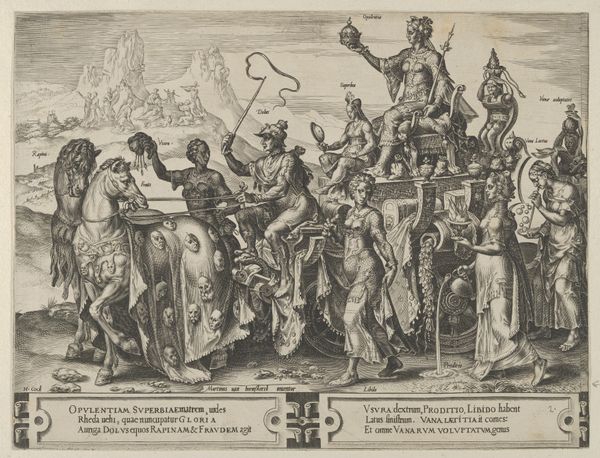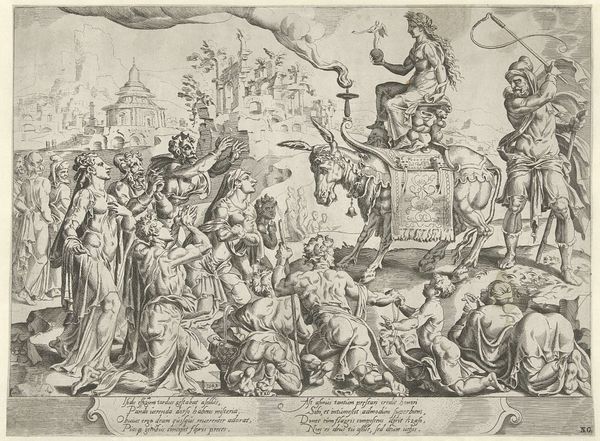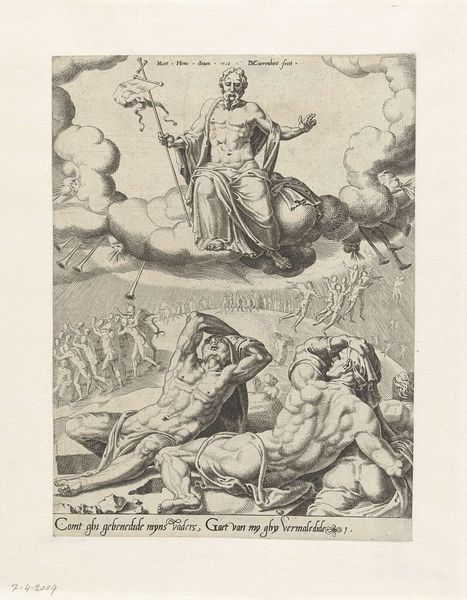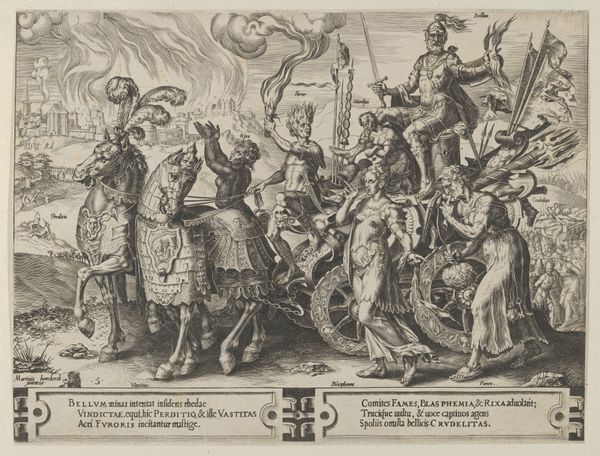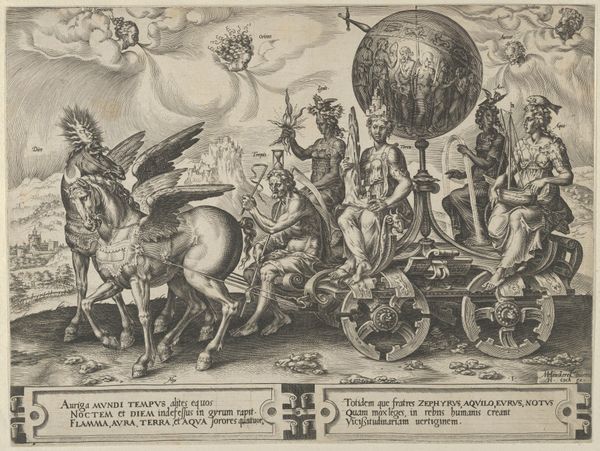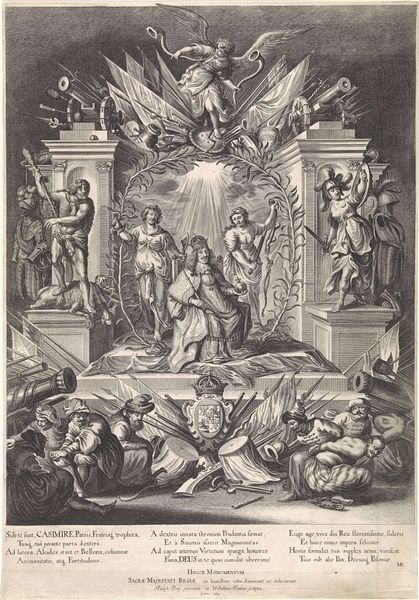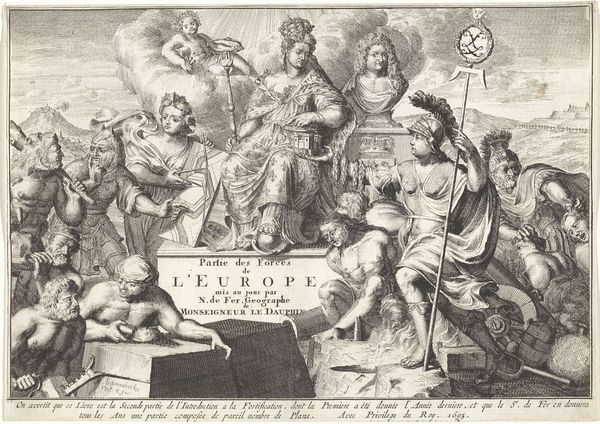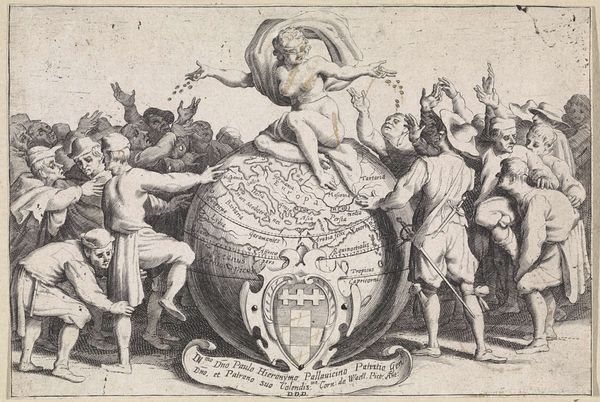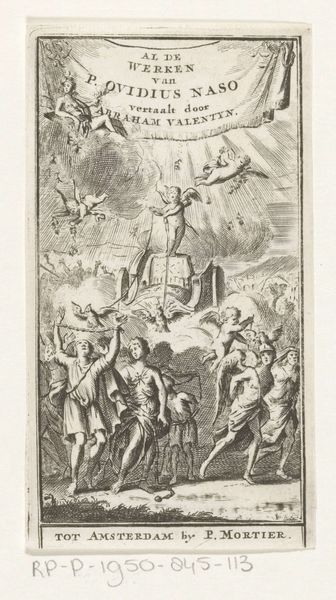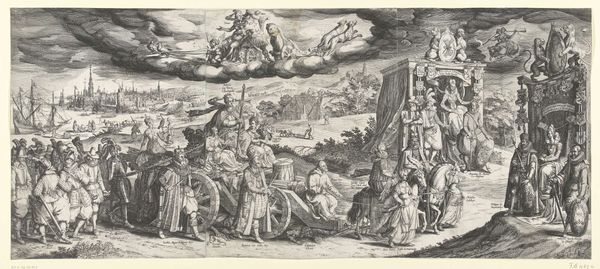
print, engraving
#
neoclacissism
#
allegory
# print
#
landscape
#
classical-realism
#
figuration
#
form
#
line
#
history-painting
#
engraving
Dimensions: height 335 mm, width 393 mm
Copyright: Rijks Museum: Open Domain
Curator: Let's turn our attention to a print from 1795, currently residing here at the Rijksmuseum, entitled *Allegorie op de Ondeelbaarheid.* The piece is attributed to Hendrik Roosing and rendered in engraving. What's your initial read of this work? Editor: It's striking. All those figures caught in a classical, almost frozen tableau. Yet, there's a certain tension. Is it a celebration or a warning? It feels monumental, yet contained within this monochromatic engraving. Curator: It's definitely charged. Roosing uses allegory to discuss “Ondeelbaarheid,” which translates to Indivisibility. The piece speaks to the political and social climate of the time, emphasizing unity and cohesion through visual symbolism. The Roman and Greek mythical imagery is pervasive, echoing ideas of reason and civic virtue. What visual symbols stand out for you? Editor: The eye in the sky immediately grabbed my attention. It oversees all these figures, and in the bottom of the print we can see figures resembling rivers and deities resting on bodies of water, like symbols of land that need order. Is that supposed to represent divine will and territorial domains all converging towards order and wholeness? It’s as if all these forces, terrestrial and divine, are being called upon to unify. It reminds me of very complicated theater piece on paper. Curator: Indeed. The eye likely symbolizes divine providence or perhaps reason itself watching over the nation. And you’ve keenly observed those reclining river gods representing territorial claims to reinforce the notion of unity. It's quite theatrical, you're right, employing stock figures from classical antiquity to address contemporary issues. Athena, goddess of wisdom and warfare, lends authority. Justice reinforces notions of righteousness. They’re all meant to evoke specific cultural associations that the viewers from that period would've recognized and responded to. Editor: There's something so stylized about it. Like they are props on display, especially the deities looking upon humanity. I'm still stuck between feeling hopeful about the piece or on the other hand slightly terrified. Is that eye going to help us or watch us succumb? Curator: Well, that tension speaks to the work's effectiveness. It isn't a simple, celebratory image. It uses classical idealism to address the messy realities of nationhood, warning of potential disunity but with that ever hopeful perspective, the need for strength in shared purpose. It prompts reflection even now. Editor: I can feel that now, the weight of the ideals and the challenge of achieving them. It is a layered reflection of the past. Curator: It is. I appreciate you helping unpack this one, lending that emotional layer we sometimes miss in art historical readings.
Comments
No comments
Be the first to comment and join the conversation on the ultimate creative platform.
